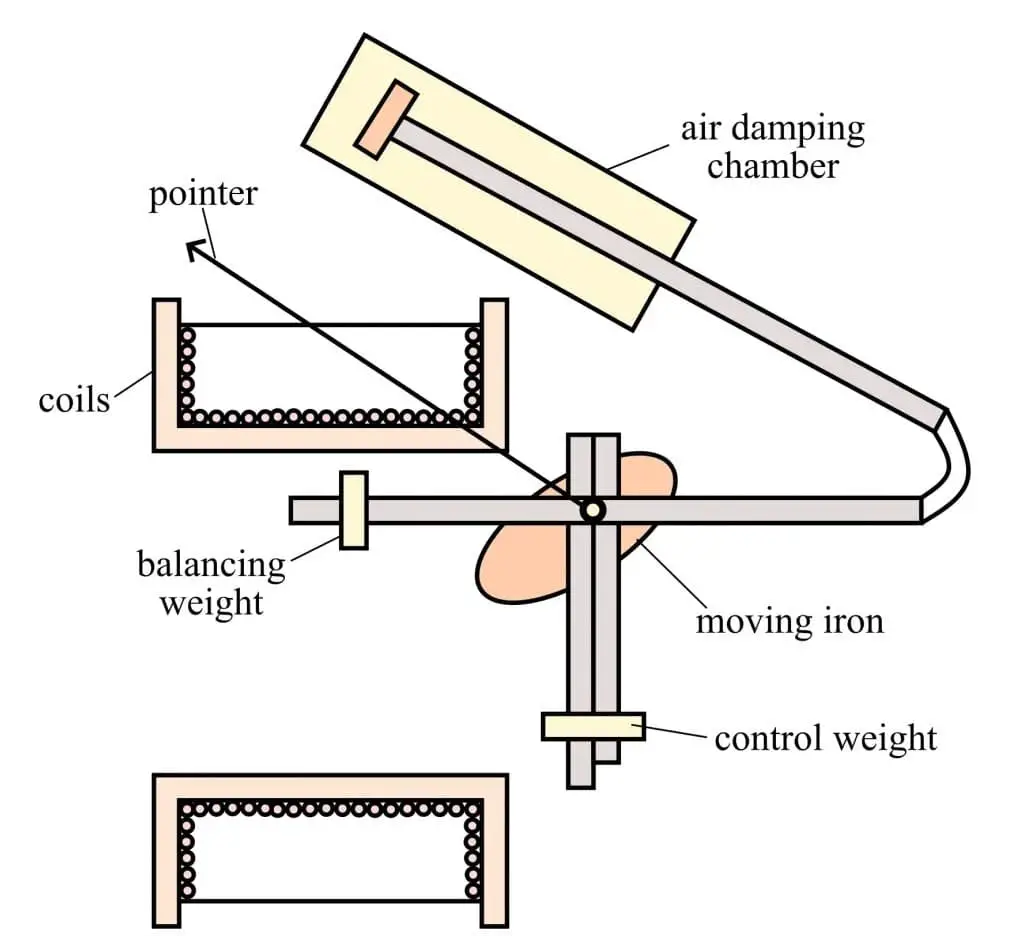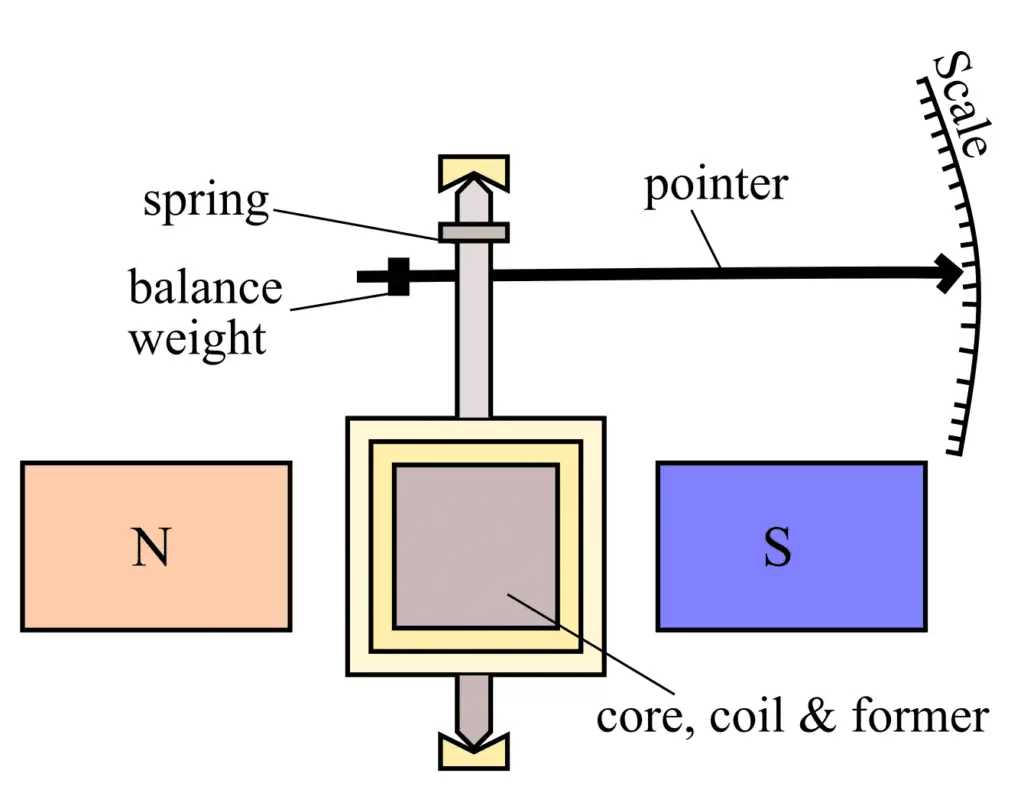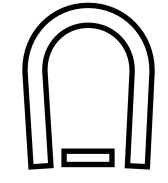This article describes the major differences between moving iron and moving coil instruments. For the purpose of determining the electrical parameters of electronic circuits, numerous instruments have been developed.
Some of the electronic measuring instruments used for the measurement of electrical quantities such as current, voltage, power, resistance, etc. are moving coil instruments, moving iron instruments, wattmeters, multimeters, etc.
In this article, we will be discussing the major differences between two such measuring instruments namely – the Moving Iron Instrument and Moving Coil Instrument. But before, a short introduction about both the measurements is given to get a better understanding of both the measuring instruments.
What is a Moving Iron Instrument?
A moving iron instrument is defined as the type of measuring instrument used to measure both alternating and Direct current flows in any electronic circuit. The moving iron instrument is mainly used for the measurement of current and voltage across any electronic equipment or device. It is mainly comprised of a moving iron vane and an electromagnet.

The principle of operation of a moving iron core instrument is based on the phenomena of electromagnetic induction. In this phenomenon, a piece of soft iron is placed in a strong magnetic field generated by means of an electromagnet. The strength of the magnetic field produced is directly proportional to the amount of current supplied to the electromagnet.
The magnetic field exerts a force on the piece of iron core, thus causing its deflection. A pointer attached to the moving iron vane then points to the magnitude current or voltage flowing across the connected electronic device. The moving iron instrument can be used for the measurement of AC and DC.
The symbol of the moving iron instrument is given below.

What is a Moving Coil Instrument?
A moving coil instrument is defined as the type of measuring instrument used to measure only Direct current flow in any electronic circuit. The moving coil instrument mainly comprised of a moving coil and electromagnet, is used for the purpose of measuring voltage, current, and resistance or also sometimes behaves like a galvanometer.

The principle of operation of a moving iron core instrument is similar to that of the operation of a DC motor. Here instead of a soft iron core, a conductive coil is kept in a magnetic field generated by a permanent magnet, whose rotation helps in the measurement of the amount of voltage and current flowing across the connected electronic device.
The moving coil instrument is also referred to as a permanent magnet moving coil instrument (PMMC) due to the presence of a permanent magnet within the instrument for the purpose of producing a magnetic field.
The symbol of the moving coil instrument is given below.

Difference Between Moving Iron & Moving Coil Instrument
The table given below highlights the important differences between the two popular means of measurement namely – Moving Iron Instrument and Moving Coil Instrument.
| Parameter | Moving Iron Instrument | Moving Coil Instrument |
| Description | A moving iron instrument involves the attraction of a soft iron vane to an electromagnet for the purpose of measuring voltage. | A moving coil instrument involves the attraction of a conducting coil to a permanent magnet for the purpose of measuring voltage. |
| Working principle | The moving iron instrument works based on the theory of magnetic attraction, in which a magnetic material gets attracted to an existing magnetic field. | The moving coil instrument is based on the working of a DC motor in which a force is exerted on the current-carrying conductor kept in a magnetic field, resulting in the rotation of the coil. |
| Measurement scale | The measuring scale of a moving iron instrument is not steady or uniform. | While the measuring scale of a moving coil instrument is steady or uniform. |
| Measuring quantities | A moving coil instrument is capable of measuring both direct and alternating forms of current. | A moving coil instrument is capable of measuring only direct current flow across electronic devices. |
| Dependency of pointer movement | The position of the pointer is linearly proportional to the current’s squared magnitude in the case of a moving iron instrument. | The position of the pointer is linearly proportional to the current-carrying coil in the case of a moving coil instrument. |
| Construction | Due to the use of a static coil in the case of a moving iron instrument, its construction or design is relatively less complicated. | Due to the use of a rotational coil and static magnetic field, in the case of a moving coil instrument, its construction or design is comparatively much more complex. |
| Controlling torque | Spring control or gravity control is responsible for generating the controlling torque in a moving iron instrument. | The control spring is responsible for generating the controlling torque in a moving coil instrument. |
| Type of damping | Moving iron instruments experience air friction damping. | While moving coil instruments experience eddy current damping. |
| Cause of the magnetic field | The magnetic field is generated by means of an electromagnet in the case of a moving iron instrument. | The magnetic field is generated by means of a permanent magnet in the case of a moving coil instrument. |
| Sensitivity | Moving iron instruments have a comparatively lesser sensitivity rate. | Moving coil instruments have a comparatively higher sensitivity rate. |
| Current range | 10mA to 100A is the range of current magnitude that can be measured by the moving iron instrument. | 10µA to 100mA is the range of current magnitude that can be measured by the moving coil instrument. |
| Coil design | Based on the quantity of current or voltage measured by the moving iron instrument, the coil is designed. | The coil of a moving coil instrument is comprised of a thin wire with a minimal number of turns. |
| Element of rotation | A soft iron core or vane is the main element of rotation used to measure the current and voltage magnitudes. | Thin wired conducting coil is the main element of rotation used to measure the current and voltage magnitudes. |
| Loss due to hysteresis | A moving iron instrument is subject to a hysteresis loss. | A moving coil instrument is not subject to hysteresis loss. |
| Power usage | The power consumption of a moving iron instrument is relatively high. | The power consumption of a moving coil instrument is relatively low. |
| Expense | Moving iron instruments are comparatively cheaper and affordable. | Moving coil instruments are comparatively costlier. |
| Precision | The precision of measurement of moving iron instruments is relatively low. | The measured values of moving coil instruments are highly precise. |
| Application | Moving iron instruments mainly find their applications as a pointer or an indicating measuring device. | Moving coil instruments mainly find their applications as Direct current (DC) measuring instruments. |
Conclusion
In conclusion, this article discusses the key differences between moving iron instruments and moving coil instruments in detail. It can be observed that the main difference that sets these two measuring devices apart is that the moving iron instrument is utilized mainly as an indicating instrument for measuring both direct and alternating current forms across any electronic equipment. While the moving coil instrument is mainly utilized for the measurement of direct current alone.